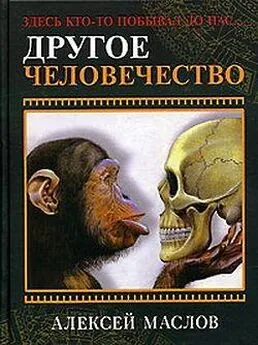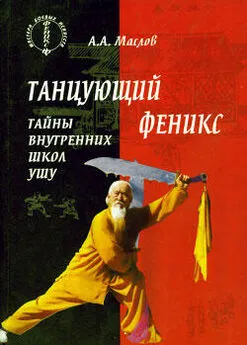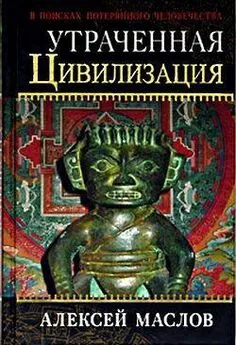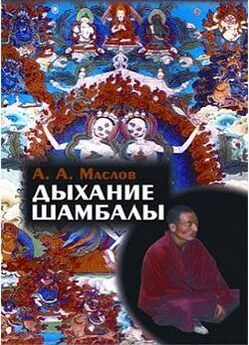Алексей Маслов - Другое человечество. Здесь кто-то побывал до нас...
- Название:Другое человечество. Здесь кто-то побывал до нас...
- Автор:
- Жанр:
- Издательство:Литагент «Неоглори»36100ed1-bc2d-102c-a682-dfc644034242
- Год:2006
- Город:Ростов-на-Дону
- ISBN:5-222-07913-9
- Рейтинг:
- Избранное:Добавить в избранное
-
Отзывы:
-
Ваша оценка:
Алексей Маслов - Другое человечество. Здесь кто-то побывал до нас... краткое содержание
Современное человечество не является ни «венцом творения», ни результатом долгой эволюции. Оно вообще возникло, кажется, ниоткуда, внезапно и одномоментно. А до нас на этой земле жило много видов человечеств. И ни один их тех, кого мы считаем нашим предком, не был даже нашим «родственником».
И эти – другие человечества – оказались значительно более успешными, чем мы сами, и прожили они в десятки раз больше, чем сегодня существуем мы. Кажется, разные виды человечества возникают и исчезают на земле циклическим образом – человечество «обнуляется», приходит к своему началу, и все начинается вновь.
И миллионы лет назад на планете существовали совсем другие цивилизации, абсолютно непохожие на нашу, населенные другими видами людей.
Они не были «тупиковыми» ветвями. Вполне возможно, что «тупиковыми» как раз являемся мы…
Так откуда же взялось современное человечество? И суждено ли ему стремительно исчезнуть?
Другое человечество. Здесь кто-то побывал до нас... - читать онлайн бесплатно ознакомительный отрывок
Интервал:
Закладка:
83. Cranston S. and Williams, C. Reincarnation: A New Horizon in Science, Religion and Society. Pasadena, 1993.
84. Creed K. Heaven is Crowded with Cavemen! // Weekly World News, February 2000, N 22: 33.
85. Cremo M. A., and Thompson, R. L. Forbidden Archaeology. San Diego, 1993.
86. Crick F and Orgel Leslie. Directed panspermia // Icarus, 1973, Vol. 19, p. 341.
87. Crick F. Life Itself. London: Macdonald, 1981.
88. Crick F. Of Molecules and Men. Seattle: University of Washington Press, 1966.
89. Cullis C. A. Molecular aspects of the environmental induction of Heritable Changes // Flax Heredity, 1977, Vol. 38, pp. 129-54.
90. Cuvier G. Recherches sur les ossements fossiles de quadropedes. T. IV. Paris: Detervill, 1812.
91. Dansgaard W., White, W. C., and Johnsen, S.J. The Abrupt Termination of the Younger Dryas Climate Event // Nature, 339, 15 June 1989, pp. 532-3.
92. Dart R. Australopithecus africanus: The Man-Ape of South Africa // Nature, 1925, N 115: 195-9,
93. Darwin Ch. The Descent of Man. London: John Murray, 1901.
94. Darwin Ch. The Life and Letters of Charles Darwin (ed. F. Darwin, 3 vols.). London, 1887.
95. Darwin Ch. The Origin of Species by Means of Natural Selection. London, 1985.
96. Darwin Ch. The Origin of Species. New York Macmillan, 1962.
97. Dawkins R. The Blind Watchmaker. London: Longman, 1986.
98. Dawkins R. The Selfish Gene. Oxford: Oxford University press, 1989.
99. Day M.H. Guide to fossil man. London: Cassell, 1986.
100. Deacon J. Changes in the archaeological record in South Africa at 18 000 BP. In: Gamble and Soffer 1990.
101. Dean C., Leakey M.G., Reid D., Schrenk F., Schwartz G.T., Stringer C.B. et al. Growth processes in teeth distinguish modern humans from Homo erectus and earlier hominins // Nature, 2001, 414:628-31.
102. Delporte H. L’image de la femme dans l’art prehisloricfue. Paris: Picard, 1979.
103. Delson E. One skull does not a species make // Nature, 1997, N 389:445-6.
104. Delson E. Human phylogeny revised again // Nature, 1986 N 322: 496-7.
105. Delson E. Evolution and palaeobiology of robust Australopithecus.// Nature 1987, N 327; 654-5.
106. Dennell R.W., H. Rendell and E. Hailwood. Early tool making in Asia: two million year old artifacts in Pakistan // Antiquity 1988, N 62: 98-106.
107. Dennell, R.W., H. Rendell and E. Hailwood. Late Pliocene artifacts from Northern Pakistan // Current Anthropology 1988, N 29: 495-8.
108. Denton E. Reflectors and fishes // Scientific American, 1971, N 224(1)64.
109. Denton M. Evolution: A Theory in Crisis. Bethesda (MD) 1986.
110. Desbrosse R. and J. Koziowski. Hommes et climats a l’age du mammoth: Paleotithique superieur d’Eurasie cetirale. Paris: Masson. 1988
111. Desmond A. The Hot Blooded Dinosaurs, London: Blond amp; Briggs, 1975.
112. Diamond J. Colonization cycles in man and beast // World Archaeology 1977, N 8: 249-61.
113. Diamond J. The rise and fail of the third chimpanzee: how our animal heritage affects the way we live. London, Vintage, 1991.
114. Diamond J. The Rise and Fall of the Third Chimpanzee. London: Vintage, 1991.
115. Dibble, H.L. The interpretation of middle Paleolithic scraper morphology // American Antiquity 1987, N 52:109-17.
116. Dobson J.E. The iodine factor in health and evolution. // The Geographical Review, 1998, N 88:1-28.
117. Dobzhansky Th. Genetics and the Origin of Species, Columbia University Press, 1941.
118. Dobzhansky Th. Heredity entry in Encyclopedia Britannica, 15th Edition. 1984.
119. Driesch H. The Philosophy of Vitalism, London, 1925.
120. Driesch H. The Science and Philosophy of the Organism. London, 1908.
121. Duarte C., Mauricio J., Pettitt P.B., Souto P., Trinkaus E., van der Plicht H. et al. (): The early upper Paleolithic human skeleton from the Abrigo do Lagar Velho (Portugal) and modern human emergence in Iberia // Proceedings of the National Academy of Sciences, USA, 1999, N 96:7604-9.
122. Duclaux E. Pasteur: The History of a Mind. London, 1973 (1-st ed. 1920).
123. Dunbar C. O., and Rogers, John. Principles of Stratigraphy, John Wiley, New York. 1957
124. Durrant A. The environmental induction of heritable changes in Linum, // Heredity, 1962, Vol. 17, pp. 27–61.
125. Durrant A. Environmental conditioning of flax // Nature, 1958, Vol. 81: 928-9,
126. Early man came from Asia too // Sunday times, 09.02.1997.
127. Eden M. The inadequacy of neo-Darwinian evolution as a scientific theory // Massachusetts Institute of Technology conference paper, 1967.
128. Einstein A, Podolsky B., and Rosen N. Can quantum-mechanical description of physical reality be considered complete? // Physical Review, 1935, N 47, 777.
129. Elderedge N and Gould S. Phylogenetic Patterns and the Evolutionary Process, Columbia University Press, 1960.
130. Elderedge N. Reinventing Darwin: The Great Evolutionary Debate. London, 1996.
131. Eldredge N. and R. Tattersall. The myths of human evolution. New York, Columbia University Press. 1982
132. Enard W., and Pддbo, S. Comparative primate genomics. Ann. Rev. Genomics Hum. Genet. 2004, N 5: 351-78.
133. Erwin D, Valentine J., Lablonski, D. The Origin of Animal Body Plans // American Scientist, 85 (2), March-April 1997.
134. Fairbridge R. W. African Ice-Age aridity. In: A. E. M. Nairn (ed.). Problems In Palaeoclimatology, London, 1964
135. Fairbridge, R. W. (edn), Holocene // entry in Encyclopedia Britannica, 15th Edition. 1984
136. Falk D. A God Brain is Hard to Cool // Natural History, August 1993.
137. Faul H. A history of geologic time in American Scientist. 1978, Vol. 66, pp. 159-65.
138. Faul H., Doubts of the Paleozoic time scale // Journal of Geophysical Research, 1959, Vol. 64.
139. Faul H., Geologic time scale. In: Bulletin of the Geological Society of America, 1960, Vol. 71.
140. Fay M.A. Did Marx offer to dedicate Capital to Darwin? // Journal of History of Ideas, 39, 1, January-March, 1978
141. Feuer L.S. Is the «Darwin-Marx correspondance» authentic? // Annals of Science, 32, 1975.
142. Fisher R. The Genetical Theory of Natural Selection. Oxford University Press, 1930.
143. Flood J.M. The riches of ancient Australia: a journey into prehistory. Brisbane, 1990.
144. Foley R.A. (ed.). Hominid evolution and community ecology. New York: Academic Press, 1984.
145. Foley R.A. and P.C. Lee. Finite social space, evolutionary pathways, and reconstructing hominid behavior // Science 1989, N 243: 901-6.
146. Foley R.A. and R. Dunbar. Beyond the bones of contention. // New Scientist 1989, N 14 (October): 37:1.
147. Foley R.A. Another unique species. London: Longman, 1987.
148. Foley R.A. Hominid species and stone-tool assemblages: how are they related? // Antiquity 1987, N 61:380-92.
149. Foley R.A. How many species of hominid should there be? // Journal of Human Evolution 1991, N 20:413-27.
150. Foley R.A. Off-site archaeology and human adaptation in eastern Africa. Oxford: British Archaeological Reports, 1981.
151. Foley R.A. Optimality theory in anthropology // Man 1985, N 20: 222-42.
152. Folger T. The Naked and the Bipedal // Discover, 1993, 14 (11)
153. Frayer D.W. Evolution at the European Edge: Neanderthal and Upper Paleolithic relationships // Prehistoire Europenne, 1993, N 2:9-69.
154. Freedman S., and Causer, J., 1972, Experimental test of local hidden Variables Theories in Physical Review Letters, Vol. 28, p. 938.
155. Gabunia L., de Lumley M.-A., Vekua A., Lordkipanidze D., and de Lumley H. Decouvert d’un nouvel hominide а Dmanissi (Transcaucasie, Georgie). C.R.Palevol // Nature 2002 N 1:243-53.
156. Gallois R. W. The Wealden District, Institute of Geological Sciences, London, 1965.
157. Gee H. Statistical cloud over African Eve // Nature, 1992, 355:583.
158. Gesner J. Traite des Petrifications. Leyde, 1758.
159. Goldschmidt R, The Material Basis of Evolution, Yale University Press, 1940.
160. Goodman J. American Genesis. New York: Berkley Books, 1982.
161. Goodman M. Serological analysis of the systematics of recent hominids. Human Biology 1963, N 35:377–424.
162. Gorczynski R, and Steele E. Inheritance of acquired Immunological Tolerance to foreign histocompatibility antigens // Proceedings of The National Academy of Sciences of the USA, 1977.
163. Gore R. Neandertals // National Geographic, January, 1996.
164. Gore R. The Dawn of Humans. Expanding Worlds // National Geographic, May 1997, Vol.191, № 5:86-109.
165. Gore R. The first steps // National Geographic, February 1997.
166. Gould S // Natural History, 1986.
167. Gould S. Bully for Brontosaurus: Reflections // Natural History. New York: Norton, 1991.
168. Gould S. J. Wonderful Life: the Burgess Shall and the Nature of History, Hutchinson Radius, London, 1990.
169. Gould S. Ontogeny and Phytogeny. Harvard University Press, 1977
170. Gould S. Wonderful Life: the Burgess Shales and the Nature of History. London: Hutchinson Radius, 1990.
171. Gould S.J. The Panda’s Thumb. London, 1990.
172. Gould S.J., Eldredge N. Punctuated Equilibra: An Alternative to Phyletic Gradualism // Models in Paleology, pp. 88-115.
173. Grasse P. The Evolution of Living Organisms. New York Academic Press, 1977.
174. Grazia A., E. Juergens, and L. C. Stecchini, Great Mystery of Human evolution // Discover, № 9, 2003, 34–44.
175. Gribbin J. and J. Cherfas. The monkey puzzle: are apes descended from man? London: Bodley Head, 1982
176. Grine F.E. Dental evidence for dietary differences in Australopithecus and Paranthropus. A quantitative analysis of permanent molar microwear // Journal of Human Evolution 1986, N 15:783–822.
177. Grine. F.E. (ed.). The evolutionary history of the robust Australopithecines. New York 1988.
178. Grove A.T. Evolution of the physical geography of the east African Rift Valley region. In: R.W. Sims. J.H. Price and P.E.S. Whalley (eds.) Evolution, time and space: the emergence of the biosphere, 115-55. London: Academic Press, 1983
179. Guihard-Costa A.-M., Ramнrez Rozzi F. Growth of the human brain and skull slows down at about 2.5 years old. Inflйchissement de la croissance crвnio-encephalique chez l’homme actuel vers deux ans et demi. Palevol, 2004
180. Haeckel E. The General Morphology of Organisms, London, 1876.
181. Haeckel E. The History of Creation, London, 1876.
182. Haeckel E. The Last Link, London, 1899.
183. Haile-Selassie Y. Late Miocene hominids from the Middle Awash, Ethiopia. // Nature, 2001, N 412:178-81. (Ardipithecus ramidus kadabba)
184. Haile-Selassie Y., Suwa G., and White T.D. Late Miocene teeth from Middle Awash, Ethiopia, and early hominid dental evolution // Science, 2004, N 303:1503-5.
185. Hall B. Spontaneous point mutations that occur more often when advantageous than when neutral in Genetics, 1990, Vol. 126.
186. Hall C.M., R.C. Walter and D. York. Tuff above «Lucy» is over 3 ma old. // Eos 1985, N 66.
187. Hall H.G. and K. Muralidharan. Evidence from mitochondrial DNA that African honey bees spread as continuous maternal lineages // Nature 1989, N 339: 211-13.
188. Hapgood Ch., and Campbell, James. Earth’s Shifting Crust, press, London: Museum. 1958.
189. Hardin G. Nature and Man’s Fate. New York: Mentor, 1961.
190. Hardy, sir Alister, The Living Stream, Collins, London, 1965.
191. Haviland W. A. Anthropology. San Diego, New York: Harcourt Brace and Company, 1994.
192. Hill A, Ward S, Brown B. Anatomy and age of the Lothagam mandible. // in Human Evolution, 1992, 22:439–451.
Читать дальшеИнтервал:
Закладка:







